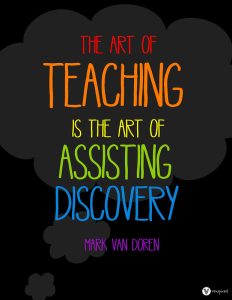Language learning is always challenging, with the fear of making mistakes standing out as one of the barriers. The fear is often rooted in shame, signaling to language learners that they will face rejection in the form of judgment, invalidation, punishment, scolding, etc. This fear leads to students’ reluctance to embrace errors as stepping stones to fluency.
Continue readingLeveraging LinkedIn to Expand Professional Network
In today’s competitive job market, building and nurturing a professional network is crucial to career success. Several studies repeatedly show that a majority of positions are filled through referral, internal hiring, and networking within the hidden job market, underscoring the impact of personal connections on professional opportunities.
Among the many online tools available, LinkedIn remains the leading professional networking platform for those seeking to find new opportunities, build meaningful connections, and expand their career.
Continue readingLearner’s Autonomy! Is it for all learners?

As an ESL teacher with over a decade of progressive teaching experience, no notion in English language pedagogy was as mind–blowing to me as the idea of learner autonomy. The way that learning and learners are seen as autonomous has always resonated highly with me; I always thought if anyone masters independent learning, they can learn almost anything with joy and efficiency. Recently, however, I’ve been thinking differently about this. Not because I am now a skeptic of this approach, but because I have been wondering if all learners want to be independent learners! Based on my recent encounters and experience at work, I now think maybe there are some learners who learn best without being independent. In this blog post, I’d like to share my own experience with this type of learner. Continue reading
Creating Effective Lesson Plans
It is often said that if you fail to plan, you plan to fail. One of the challenges cited by teachers in the language classroom especially is creating effective lesson plans (Velikaya, 2020).
So, what is an effective lesson plan?
Continue readingTeacher Centred Literacy Classes

I know the orthodoxy of education is for lessons to be student centred. But I’m going to risk excommunication here by suggesting that there are times when it’s absolutely essential that classes be teacher centred. Literacy classes are such instances.
To go against one’s training and instincts by shifting focus to oneself (the teacher) is one of the many challenges of teaching a literacy class. It doesn’t take long, however, to see that the lower the level of a student’s English, the more guidance, scaffolding, and support they need from their teacher.
Continue readingUsing Authentic Materials for EAP Students
 Have you ever considered how you might conduct effective and enjoyable EAP sessions? Despite the limited duration and high-stakes nature of EAP classes, the emphasis on learner autonomy, critical thinking, and authentic academic situations renders the teaching process potentially more engaging than that of a standard English course, provided appropriate delivery methods are employed.
Have you ever considered how you might conduct effective and enjoyable EAP sessions? Despite the limited duration and high-stakes nature of EAP classes, the emphasis on learner autonomy, critical thinking, and authentic academic situations renders the teaching process potentially more engaging than that of a standard English course, provided appropriate delivery methods are employed.
As per Tomlinson’s (2013) perspective, classroom material ought to offer an array of authentic input in the target language, encompassing diverse styles, forms and functions. Based on this notion, I developed a lesson plan aimed at introducing my EAP students to academic research reports, facilitating their exposure to an authentic lecture and enabling them to independently explore the subject matter. To achieve this objective, I selected a TED talk and a pertinent research article as the primary resources for this lesson. Continue reading
Moving beyond the shadows: Showcasing AI in the classroom

In my last blog post, I mentioned the hours I had spent examining students’ work for suspected AI use. Now, a couple of months later, I am more exhausted from the process than ever. We educators are still muddling our way through without clear policies or reliable detection tools, and are literally left “up to our own devices.”
But what if we change tack? What if we encourage students to use AI? Until now, I have balked at exploring its use in class, worried about introducing it to students who had never heard of it. After all, what kind of teacher would show students how to cheat? But I am no longer under such delusions. Unless they have been hiding under a rock, most students know exactly how to use AI tools.
Continue readingCoping with the AI Challenge
September is here! The past eight months of warnings of artificial intelligence- or AI- generative chat calamities were heeded by some and ignored by others. Hopefully, you are one of the fortunate ones who work in an institution where AI policies, guidelines, just-in-time support and plagiarism teaching-learning plan statements are ready and accessible to supervisors, instructors and learners. If this is not your situation, this post is for you. Read on to quickly pick up some tips to cope with AI generative chat technologies while your institution works towards comprehensive strategies.
Getting to Know Each Other Better in the Language Classroom
In my very first TESL Ontario blog post, I shared an activity to help teachers remember their students’ names.1 It also happens that the activity helps students learn each other’s names and, as a result, helps to build community. By addressing each other by name, students are more likely to build bonds and feel valued. Building community is a process, however, and although this activity is a good start, teachers can incorporate other activities throughout the term or academic year to make the process memorable.
The following activity is one I use to help strengthen students’ sense of community by letting them share something about themselves that highlights a positive attribute. This activity also gives the teacher the opportunity to do the same.
Stand Out from the Crowd – Professional Development That Makes You Shine
 The language training field spans a variety of teaching sectors from government funded LINC and Adult ESL to College and University EAP and ESL, as well as private sector language schools, career colleges and tutoring agencies. The job market in this field is vast, immensely competitive and at times difficult to navigate.
The language training field spans a variety of teaching sectors from government funded LINC and Adult ESL to College and University EAP and ESL, as well as private sector language schools, career colleges and tutoring agencies. The job market in this field is vast, immensely competitive and at times difficult to navigate.
Thousands of new graduates, internationally trained language teachers and experienced educators alike seek employment in the field of English language education each and every day. In this sixth installment of our blog series designed to help educators in our community find success in their career journey, TESL Ontario has reached out to eight (8) Ontario hiring managers across various sectors in our field and asked them to share some insights on what kind of professional development they value. Continue reading





